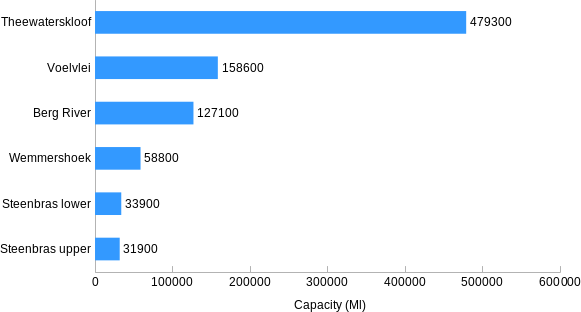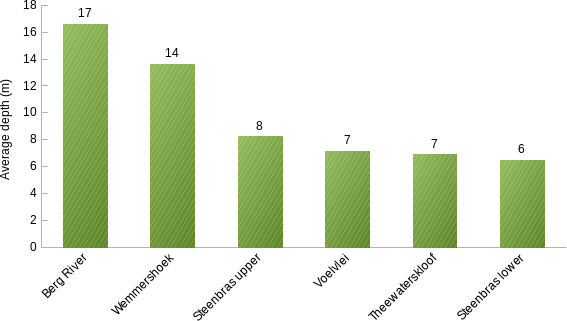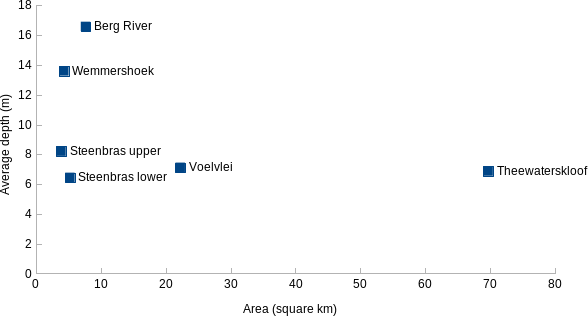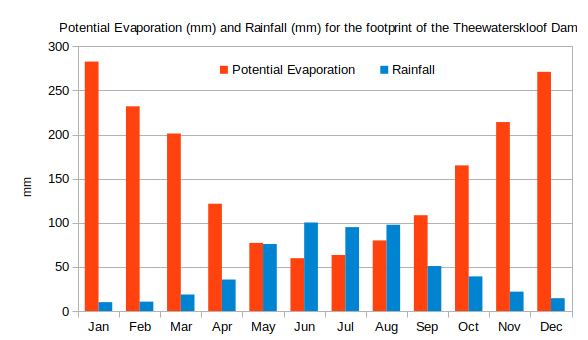Western Cape Dams
Major dams supplying the City of Cape Town
Western Cape Water Supply System (WCWSS)
There are six main dams supplying water to the City of Cape Town and Boland, namely the Berg River, Steenbras Lower, Steenbras Upper, Theewaterskloof and Voëlvlei dams. Together, these large dams make up the Western Cape Water Supply System (WCWSS).
Capacity of the dams
Theewaterskloof Dam is by far the largest dam in the WCWSS and has a capacity larger than the other five dams combined.

Dam depths
The average depth of a dam is the ratio between the volume and surface area of the dam. Deeper dams are better than shallow dams as they lose a lower proportion of their water to evaporation. The Berg River and Wemmershoek Dams are the deepest in the WCWSS.

Area vs depth
Ideal dams are large and deep. Theewaterskloof is a large, shallow dam and is thus susceptible to evaporation.

Evaporation
All dams lose water through evaporation to the atmosphere. The amount lost to evaporation shows a strong seasonal pattern and is much higher in summer than in winter. The amount of evaporation is affected by a number of factors such as air temperature, water temperature, wind speed, humidity and the elevation of the sun.
The graph shows average monthly evaporation and rainfall for the Theewaterskloof dam and it can be seen that evaporation exceeds rainfall for eight months of the year.

Comparison of dam capacities
The largest dams in the Western Cape are much smaller than large dams elsewhere in South Africa. This means that even when full, the volume of water stored in these dams is less than the capacity of the Vaal dam, for example.
This graph ranks the 100 largest dams from largest to smallest. The Western Cape dams are highlighted in yellow.
